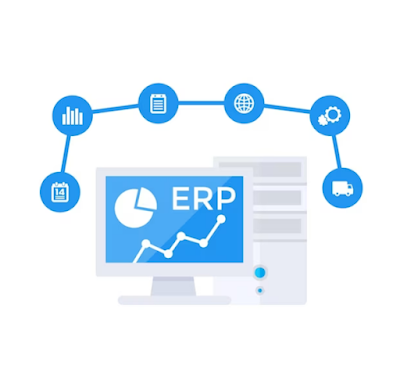The Benefits of Automating Manual Processes with an ERP System
In today's fast-paced and highly competitive business environment, automation has become a vital aspect of success. Companies are constantly seeking ways to streamline their operations and reduce costs, while also improving efficiency and accuracy. One area that is ripe for automation is manual processes, which are often time-consuming, error-prone, and tedious. One solution to this problem is an ERP system.
ERP, or Enterprise Resource Planning, is a software application that helps businesses manage their core business processes, such as accounting, procurement, inventory, human resources, and customer relationship management. ERP systems are designed to automate and integrate these processes, making them more efficient and effective.
Here are some of the benefits of automating manual processes with an ERP system:
1. Increased Efficiency :
Manual processes are often slow and labor-intensive. With an ERP system, tasks can be automated, reducing the time and effort required to complete them. For example, an ERP system can automatically generate purchase orders when inventory levels fall below a certain threshold, reducing the need for manual intervention.
2. Improved Accuracy:
Manual processes are prone to errors, which can be costly and time-consuming to correct. An ERP system can help reduce errors by automating processes and ensuring that data is entered accurately. This can lead to improved decision-making and better business outcomes.
3. Better Collaboration:
ERP systems provide a centralized database that can be accessed by multiple departments and employees. This enables better collaboration and communication, as everyone has access to the same data. For example, sales and customer service teams can access the same customer data, allowing them to provide better service and support.
4. Cost Savings:
Manual processes can be expensive, especially when considering the cost of labor, materials, and time. By automating processes with an ERP system, companies can reduce costs by eliminating the need for manual intervention. This can also lead to cost savings in other areas, such as inventory management and procurement.
5. Improved Customer Service:
ERP systems can provide companies with a better understanding of their customers' needs and preferences. This can help improve customer service and satisfaction by enabling companies to respond quickly to customer inquiries and requests. For example, if a customer places an order online, an ERP system can automatically generate a confirmation email and provide an estimated delivery date.
6. Scalability:
ERP systems are designed to grow with your business. As your company expands, an ERP system can accommodate more users, data, and transactions. This makes it a scalable solution that can support your business needs over time.
In conclusion, automating manual processes with an ERP system can provide significant benefits to businesses of all sizes. By improving efficiency, accuracy, collaboration, cost savings, customer service, and scalability, an ERP system can help companies stay competitive and thrive in today's dynamic business environment.




Comments
Post a Comment